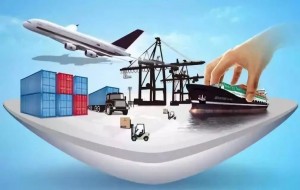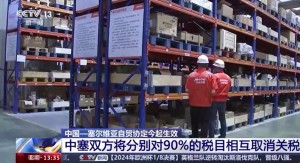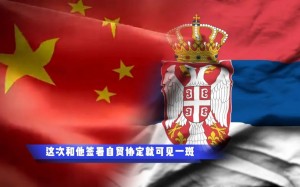По данным Министерства торговли, Соглашение о свободной торговле между правительством Китайской Народной Республики и правительством Республики Сербия, подписанное Китаем и Сербией, завершило соответствующие внутренние процедуры утверждения и официально вступило в силу 1 июля.
После вступления соглашения в силу обе стороны постепенно отменят тарифы по 90 процентам налоговых статей, из которых более 60 процентов налоговых статей будут отменены сразу в день вступления соглашения в силу. Итоговая доля беспошлинного импорта с обеих сторон достигнет около 95%.
Соглашение о свободной торговле между Китаем и Сербией также охватывает широкий спектр товаров. Сербия включит в нулевой тариф автомобили, фотоэлектрические модули, литиевые батареи, оборудование связи, механическое оборудование, огнеупорные материалы и некоторые сельскохозяйственные и водные продукты, которые являются ключевыми проблемами Китая, а тариф на соответствующие товары будет постепенно снижаться по сравнению с нынешним. 5-20% до нуля.
Китай включит в нулевой тариф генераторы, двигатели, шины, говядину, вино и орехи, на которых сосредоточено внимание Сербии, а тариф на соответствующие продукты будет постепенно снижен с нынешних 5-20% до нуля.
В то же время соглашение также устанавливает институциональные механизмы по правилам происхождения, таможенным процедурам и упрощению процедур торговли, санитарным и фитосанитарным мерам, техническим барьерам в торговле, торговым средствам правовой защиты, разрешению споров, защите интеллектуальной собственности, инвестиционному сотрудничеству, конкуренции и многим другим областям. , что обеспечит более удобную, прозрачную и стабильную бизнес-среду для предприятий двух стран.
Товарооборот между Китаем и Сенегалом в прошлом году увеличился на 31,1 процента.
Республика Сербия расположена на северо-центральной части Балканского полуострова Европы, ее общая площадь составляет 88 500 квадратных километров, а ее столица Белград расположена на пересечении рек Дунай и Сава, на перекрестке Востока и Запада.
В 2009 году Сербия стала первой страной в Центральной и Восточной Европе, установившей стратегическое партнерство с Китаем. Сегодня в рамках инициативы «Пояс и путь» правительства и предприятия Китая и Сербии осуществляют тесное сотрудничество в целях содействия строительству транспортной инфраструктуры в Сербии и стимулирования местного экономического развития.
Китай и Сербия осуществили ряд проектов сотрудничества в рамках инициативы «Пояс и путь», включая инфраструктурные проекты, такие как железная дорога Венгрия-Сербия и коридор Дунай, которые не только облегчили транспортировку, но и придали крылья экономическому развитию.
В 2016 году отношения Китая и Сербии были повышены до уровня всестороннего стратегического партнерства. Промышленное сотрудничество между двумя странами набирает обороты, принося значительные экономические и социальные выгоды.
В последние годы, с подписанием соглашений о взаимном признании безвизового режима и водительских прав и открытием прямого авиарейса между двумя странами, значительно активизировались кадровые обмены между двумя странами, культурные обмены становятся все более тесными, а «китайский язык» лихорадка» накаляется в Сербии.
Данные таможни показывают, что за весь 2023 год двусторонняя торговля между Китаем и Сербией составила 30,63 млрд юаней, увеличившись на 31,1% по сравнению с аналогичным периодом прошлого года.
Среди них Китай экспортировал в Сербию 19,0 млрд юаней и импортировал из Сербии 11,63 млрд юаней. В январе 2024 года объем импорта и экспорта двусторонних товаров между Китаем и Сербией составил 424,9541 миллиона долларов США, увеличившись на 85,215 миллиона долларов США по сравнению с тем же периодом 2023 года, увеличившись на 23%.
Среди них общая стоимость экспорта Китая в Сербию составила 254 553 400 долларов США, увеличившись на 24,9%; Общая стоимость товаров, импортированных Китаем из Сербии, составила 17 040,07 миллиона долларов США, увеличившись на 20,2 процента в годовом исчислении.
Это, несомненно, хорошая новость для внешнеторговых предприятий. По мнению представителей отрасли, это будет не только способствовать росту двусторонней торговли, чтобы потребители двух стран могли наслаждаться более качественной и преференциальной импортной продукцией, но также будет способствовать инвестиционному сотрудничеству и интеграции производственных цепочек между двумя сторонами. лучше использовать свои сравнительные преимущества и совместно повышать международную конкурентоспособность.
Время публикации: 04 июля 2024 г.



